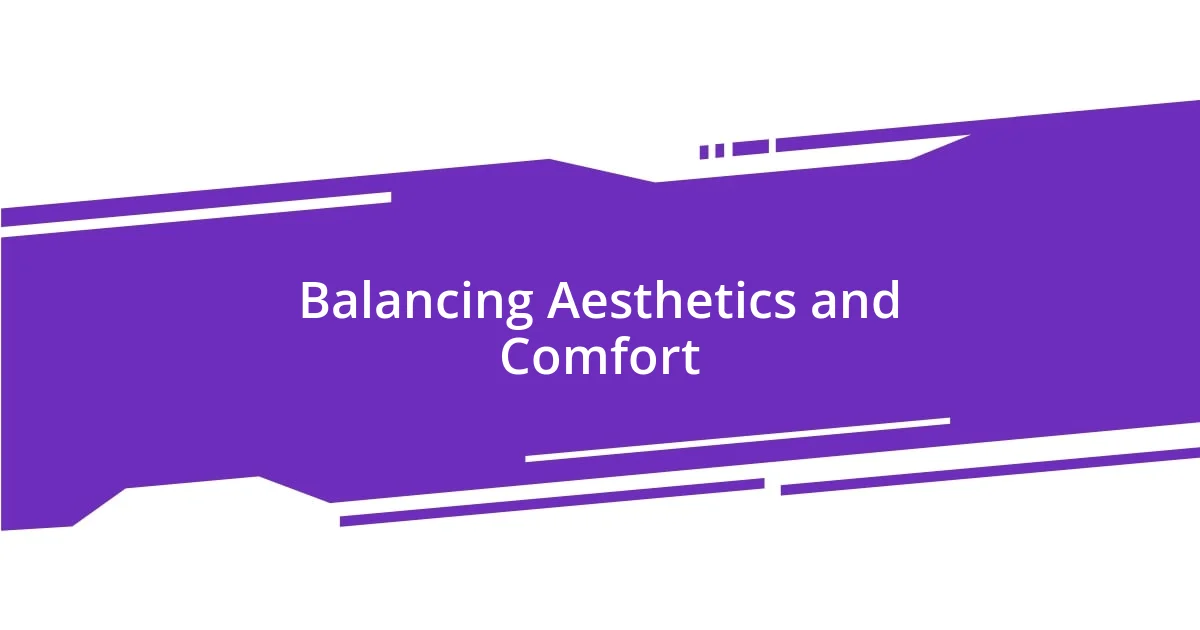Key takeaways:
- Functionality and intuitive layouts are critical for enhancing guest navigation and overall experience in hotel design.
- Incorporating local culture and sustainable practices not only enriches the environment but also fosters a sense of connection and responsibility among guests.
- A balance of aesthetics and comfort in design is essential; inviting atmospheres and thoughtful details significantly enhance guest enjoyment and satisfaction.

Key Principles of Hotel Design
When it comes to hotel design, functionality reigns supreme. I remember staying in a beautifully decorated hotel where the layout felt intuitive, guiding me effortlessly from the lobby to my room. It struck me how important it is for guests to navigate spaces easily – sometimes, a well-placed sign or an open corridor can transform a potentially frustrating moment into a pleasant experience.
Another crucial principle is incorporating local culture and identity. During one of my travels, I found myself in a hotel that showcased local artwork and traditional crafts. This wasn’t just decoration; it created a narrative that made me feel connected to the place. Doesn’t it elevate your stay when the environment reflects the essence of the area? It’s like stepping into a story rather than just a space.
Lastly, sustainability has become a priority in hotel design. I once checked into a green hotel that prioritized natural lighting, organic materials, and energy efficiency. It resonated with my values, making me feel good about my choice. How much do our surroundings affect our perception of a place? For me, a thoughtfully designed hotel can enhance the entire travel experience, fostering a sense of purpose and connection to the Earth.

Elements of Functional Hotel Layouts
Creating a functional hotel layout involves careful consideration of traffic flow and spatial arrangement. I recall staying at a hotel where the reception desk was centrally located, allowing easy access to both the lobby and the elevators. It made a significant difference in my experience—by minimizing unnecessary walking, I could settle in more quickly and enjoy the amenities. Imagine the ease of checking in when everything feels strategically placed.
The use of communal spaces is another essential element. I’ve seen how open lounges or multi-purpose areas encourage interaction among guests. Once, I found myself in a hotel with a vibrant common area where people gathered around cozy seating. It fostered a sense of community, transforming solitary travelers into friends sharing stories. Doesn’t that enhance our hotel experience tenfold?
Lastly, consider the importance of privacy and noise control. On one occasion, I stayed in a hotel with thoughtfully designed soundproof rooms that shielded me from the hallway chatter. A good night’s sleep is non-negotiable when traveling. I always appreciate layouts that allow for tranquility within a bustling hotel environment, as it contributes immensely to a restful experience.
| Element | Importance |
|---|---|
| Traffic Flow | Enhances navigation and reduces guest frustration |
| Communal Spaces | Encourages interaction and community among guests |
| Privacy & Noise Control | Aids in providing a restful and tranquil environment |

Embracing Sustainable Design Practices
Sustainable design practices in hotels are becoming increasingly vital to me as I discover how they impact both the environment and guest experiences. I remember staying in a hotel that utilized reclaimed wood and energy-efficient systems. It was fascinating to see how these choices not only reduced the carbon footprint but also added warmth and character to the space. I felt a profound connection to the natural world, reminding me of the importance of making responsible choices in our travel.
Here are some key sustainable practices that resonate with me:
- Energy Efficiency: Incorporating LED lighting and smart climate controls can significantly lower energy consumption.
- Water Conservation: Low-flow fixtures and rainwater harvesting systems help lessen water waste.
- Locally Sourced Materials: Using local materials reduces environmental impact and supports the community.
- Green Certifications: Hotels that pursue certifications like LEED showcase their commitment to sustainable practices.
Seeing these elements in action truly enhances my stay and makes me feel like I’m part of a larger movement towards sustainability. Plus, who wouldn’t want to stay in a place that feels as good for the planet as it does for the soul?

Creating Inviting Guest Experiences
Creating inviting guest experiences goes beyond mere aesthetics; it’s about crafting an atmosphere that makes guests feel truly welcomed. I recall one particular hotel stay where the lobby was infused with soft lighting and subtle scents. As I walked in, the warm ambiance embraced me, making me feel instantly at home. Isn’t it incredible how sensory elements can shape our initial impressions?
Another element that stands out to me is the attention to detail in room design. On one trip, I found a handwritten welcome note and a small local treat waiting for me. That simple gesture transformed a standard room into a personal retreat, enhancing my overall experience. Wouldn’t you agree that those little touches can linger in our memories long after the stay is over?
Lastly, the availability of varied seating options in areas like restaurants and lounges matters significantly. I’ve enjoyed my time in hotels that provide both cozy nooks for solitude and open tables for socializing. It not only caters to different guest preferences but also creates an inviting atmosphere where both introverts and extroverts can feel comfortable. After all, isn’t it the balance of comfort and connection that makes us feel truly invited?

Incorporating Technology in Hotels
When it comes to incorporating technology in hotels, I find that seamless integration is key. For instance, during a recent stay, I was impressed by a hotel where all the room controls were centralized through a tablet. It was so convenient to adjust the lighting and temperature without having to get up. Isn’t it great when technology enhances comfort instead of complicating things?
Another notable experience was at a hotel that offered mobile check-in and keyless entry. I remember walking straight to my room without waiting in line at the front desk, which made me feel like a VIP. These tech innovations definitely streamline the guest experience, but they also make interactions more personal by giving us the option to engage with staff as needed. Can you believe how far technology has come to improve our travel experiences?
Moreover, smart technology in common areas, such as AI-powered concierge kiosks, has revolutionized the way we navigate hotel amenities. I once used a digital assistant to find nearby attractions and dining options, and the recommendations were spot on! I felt empowered in exploring the local scene, thanks to technology that caters to our preferences and ensures we have a remarkable stay. Doesn’t it feel good when tech understands what you need?

Designing for Different Guest Demographics
Designing for different guest demographics truly requires a nuanced approach. I remember a family-friendly hotel where the design focused on comfort for both parents and kids. The vibrant colors and play areas didn’t just entertain children; they also gave parents peace of mind, making the whole experience enjoyable. Isn’t it fascinating how design can cater to diverse needs in such a harmonious way?
On the other hand, I’ve had stays at boutique hotels that catered specifically to solo travelers and business guests. The quiet lounges were perfect for working, paired with strategic power outlets and fast Wi-Fi. I felt like the environment truly supported productivity, allowing me to accomplish tasks without distractions. How empowering is it when a space is intentionally designed for our specific lifestyles?
For older guests, I’ve seen designs that emphasize accessibility while still exuding elegance. During one memorable visit, the thoughtfully placed handrails and wide doorways didn’t compromise the aesthetic; they simply added to the hotel’s charm. It’s moments like these that make you reflect: shouldn’t every aspect of design be inclusive, ensuring all guests feel comfortable and valued?

Balancing Aesthetics and Comfort
Balancing aesthetics and comfort in hotel design is more important than I initially realized. I once stayed at a beautifully decorated hotel with stunning chandeliers and exquisite murals, but the hard, unyielding furniture left me feeling more uncomfortable than charmed. It struck me that a hotel should invite relaxation, not just capture the eye. Have you ever been in a space that looked perfect but made you want to leave?
In contrast, I found another hotel that perfectly blended style and coziness. The plush sofas and soft lighting made the lobby feel like an inviting living room rather than a sterile reception area. I remember sinking into the cushions while sipping a warm drink, fully embracing the ambiance. It’s remarkable how thoughtful design can truly make a space feel welcoming, isn’t it?
Moreover, I often reflect on how a warm color palette can evoke a sense of comfort. I once visited a hotel that used earthy tones and natural materials, which made the space feel grounded and tranquil. Walking into my room was like being embraced by nature itself. It made me wonder how many guests appreciate these subtle touches, which can transform an ordinary stay into an extraordinary experience.












